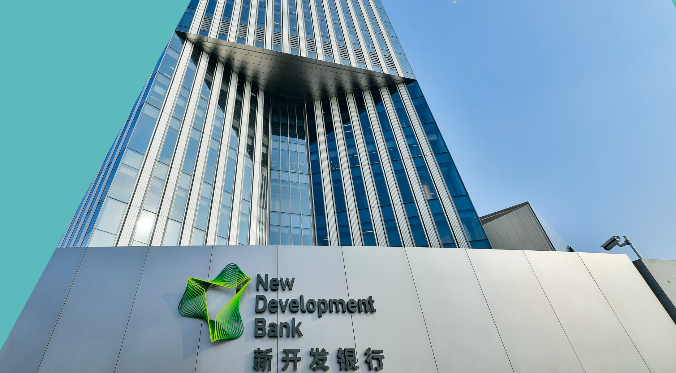South Africa hosted its first BRICS Summit in 2013. Prior to that summit, South Africa inaugurated the first BRICS Think Tank Council meeting which prepared a long-term strategy for BRICS. The five pillars of the strategy are promoting cooperation for economic growth and development; peace and security; social justice, sustainable development and quality of life; political and economic governance; and progress through knowledge and innovation sharing.
The year 2013 was also the year in which China proposed the Belt and Road Initiative. Over the past 10 years we have witnessed a certain synergy between the BRICS long term strategy and the Belt and Road Initiative with respect to the developing and emerging economies of the Global South.
China is developing its own foundational focus for the Belt and Road Initiative that resonates with the five pillars of the BRICS long term strategy. The foundational principles for China's focus rests on what has become known as the country's three initiatives: Global Development Initiative, Global Security Initiative and Global Civilization Initiative. All three initiatives are in accordance with the five pillars of the BRICS long-term strategy.
As South Africa prepares to host the 15th BRICS Summit in Johannesburg during August 22 to 24, perhaps it is time to briefly evaluate the progress made in implementing the long-term strategy of BRICS and the three Chinese initiatives focusing on multilateralism, trade, finance and development and peace and security.
The first pillar of the BRICS long-term strategy is about promoting cooperation for economic growth and development, a principle that resonates with China's Global Development Initiative. Over the past nine years, the BRICS countries have made progress in consolidating their cooperation programs for economic growth and development. BRICS launched the New Development Bank and the Contingent Reserve Arrangement, and as part of the Belt and Road Initiative, China launched the Asian Infrastructure Investment Bank. Both banks continue to play a significant role in infrastructure investment in the BRICS countries and Asia.

Intra-country trade within the BRICS group and the countries in Asia and Eurasia has always been limited by foreign exchange constraints imposed by the domination of the US dollar and the Euro. In recent years there has been a concerted effort within the countries of BRICS and in Asia to move toward the use of their own currencies for trade, making the countries less dependent on foreign exchange volatility and balance of payments constraints. The NDB incorporates the CRA to mitigate against such risks within the group.
The Chinese initiatives on economic cooperation, growth and development resonate to a large degree on the second, third, fourth and fifth pillars of BRICS' long-term strategy, namely social justice, sustainable development, and quality of life; political and economic governance; and, progress through knowledge and innovation sharing. China's initiatives on development, and peace and security are also preconditions for achieving the five pillars of BRICS' long-term strategy. Over the past few months, there has been much attention on China's efforts at peace-making in Ukraine; a new-found cultural assertiveness in its relations with Europe and the US and, its push for development support and investment for emerging and developing countries in Asia, Eurasia, Africa and Latin America. Its three global initiatives have come to characterize China's international status. The other members of the BRICS group not directly involved in the Ukraine conflict — South Africa, Brazil and India — have also been engaging in peace initiatives to resolve the Ukraine crisis.
Both the BRICS long-term strategy and China's three initiatives depend up peace, security and justice to advance to achieve the UN's Sustainable Development Goals.
The 15th BRICS Summit is an occasion to not only evaluate the five pillars of its long-term strategy, but also an occasion to assess the impact of China's three initiatives. With respect to the BRICS' strategy, some goals have been achieved with the setting up of the BRICS New Development Bank; the establishing of new trade and monetary arrangements; the BRICS heads of state are also making concerted efforts to promote global peace and security.
In addition, the BRICS countries have been in the forefront of the fight against the Covid-19 pandemic in the developing world, especially in Africa. China and South Africa played a key role in providing vaccines and support for African countries. At the Finance Summit in France recently, South African President Cyril Ramaphosa was scathing in his criticism of countries that did not support Africa in its time of need. China's Belt and Road Initiative has had enormous impacts in developing countries and the other BRICS member states through infrastructure investment. For better education, health and social services, BRICS countries are looking at sharing, innovation and technology to fast track service delivery in the member economies and regional partner economies.
Other countries of the Global South may join the BRICS group at the 15th Summit.

This year marks the 10th anniversary of Belt and Road Initiative and China's New Development Model. Can BRICS and China expand beyond their current multilateral nexus and move toward a more multilateral development paradigm as envisioned in its new approach within BRICS, Eurasia, Asia and Africa? For South-South cooperation to be meaningful it has to address the future trajectory and impact on developing and emerging economies with respect to the policy objectives of full employment, social justice and the struggle against poverty and inequality. In December 2022, China's Foreign Minister WANG Yi reported that 150 countries and 32 international organizations have joined the Belt and Road Initiative and underscored China's commitment to its initial objectives of modernization; peaceful development, and opening up and dialogue among civilizations. However, for BRICS, the Belt and Road Initiative and China's strategy to have a meaningful impact on the Global South, the multilateral dimension of the new development model should promote the harmonious and sustainable growth and development of BRICS, China and its developing and emerging partners, for mutual benefits.
Perhaps it is too early to achieve all of the goals of the five pillars and the three initiatives, but at least, as South Africa prepares to host the BRICS events and the summit, both South Africa and China will have the sense that they have contributed in some degree to a Win-Win Strategy for Global South-South cooperation and the building of more multipolar world order for the benefit of humanity in general.
Jaya Josie
Advisor
Advisor of ZIBS China Africa Center
Adjunct Professor of Venda University
*The article was originally published on China Daily:https://www.chinadaily.com.cn/a/202308/22/WS64e404f8a31035260b81d746.html


.jpg)


